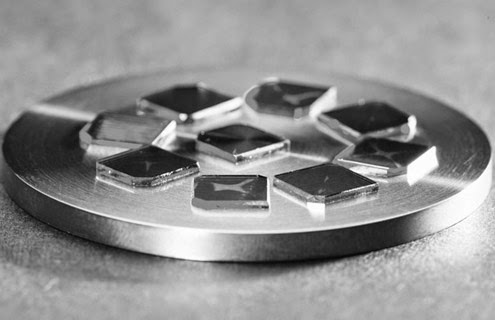Introduction
In the realm of gemology and industrial applications alike, the emergence of CVD (Chemical Vapor Deposition) diamonds has sparked immense interest and curiosity. Understanding the intricacies of how these diamonds are crafted provides a deeper appreciation for their brilliance and versatility.
What is Chemical Vapor Deposition (CVD)?
At its core, CVD is a technique used to produce high-quality synthetic diamonds in a controlled environment. Unlike traditional diamond mining, which involves extracting diamonds from the earth, CVD enables the creation of diamonds in a laboratory setting.
The Process of Growing CVD Diamonds
Seed Selection
The process begins with the selection of a tiny diamond seed, typically no larger than a grain of sand. This seed serves as the foundation upon which the synthetic diamond will grow.
Diamond Growth Chamber
Within a specialized chamber, the chosen diamond seed is placed in close proximity to a carbon-rich gas mixture. This chamber provides the ideal conditions for diamond growth to occur.
Introduction of Gases
A precise combination of gases, including hydrogen and methane, is introduced into the growth chamber. These gases undergo a chemical reaction, depositing carbon atoms onto the diamond seed.
Formation of Diamond Layers
Over time, the carbon atoms accumulate, layer by layer, on the diamond seed, gradually forming a larger, synthetic diamond crystal. This process can take anywhere from several days to several weeks, depending on the desired size and quality of the final diamond.
Controlling the Growth Conditions
Temperature and Pressure Regulation
Critical to the success of the CVD process is the precise control of temperature and pressure within the growth chamber. Variations in these conditions can significantly impact the quality and characteristics of the resulting diamond.
Gas Composition and Flow Rate
Adjusting the composition of the gas mixture and the rate at which it is introduced into the chamber allows for fine-tuning of the diamond growth process. This level of control ensures consistency and reproducibility in the production of CVD diamonds.
Quality Control Measures
Monitoring Diamond Growth
Throughout the growth process, sophisticated monitoring systems track various parameters, such as crystal size and morphology. This real-time data enables operators to make adjustments as needed to optimize diamond quality.
Testing for Purity and Crystal Structure
Once the diamond has reached its desired size, it undergoes rigorous testing to ensure purity and proper crystal structure. Advanced analytical techniques, including spectroscopy and X-ray diffraction, are employed to assess the quality of the final product.
Advantages of CVD Diamonds
Environmental Benefits
One of the most significant advantages of CVD diamonds is their minimal environmental impact compared to traditional mining practices. By eliminating the need for large-scale excavation and reducing energy consumption, CVD offers a more sustainable alternative.
Ethical Considerations
CVD diamonds are also free from the ethical concerns often associated with the diamond mining industry, such as labor exploitation and environmental degradation. This ethical transparency is increasingly valued by consumers seeking responsibly sourced gemstones. Type IIA diamonds are the purest form of diamond, containing virtually no nitrogen impurities, making them exceptionally clear and colorless.
Applications of CVD Diamonds
Jewelry
CVD diamonds are gaining popularity in the jewelry market due to their exceptional quality and affordability. From engagement rings to earrings, these lab-grown diamonds offer a sustainable and socially conscious choice for discerning consumers.
Industrial Uses
Beyond the realm of jewelry, CVD diamonds find applications in various industrial sectors, including electronics, optics, and cutting tools. Their hardness, thermal conductivity, and optical clarity make them invaluable in a wide range of technological applications.
Future Trends in CVD Diamond Production
Technological Advancements
Continued research and development in CVD technology promise to further enhance the efficiency and scalability of diamond production. Innovations in growth chamber design, gas chemistry, and process automation are driving the evolution of this rapidly expanding industry. Lab grown diamond manufacturer leverage advanced technologies, such as chemical vapor deposition (CVD) and high-pressure, high-temperature (HPHT) processes,
Market Projections
As consumer awareness of CVD diamonds grows and demand for sustainable, ethically sourced gemstones increases, the market for lab-grown diamonds is expected to continue its upward trajectory. Industry analysts project significant growth in both production capacity and market share in the coming years.
Conclusion
The process of crafting brilliance through CVD diamond production is a testament to human ingenuity and technological innovation. From the meticulous control of growth conditions to the careful quality assurance measures, every step in the process is guided by a commitment to excellence. As we look to the future, the promise of CVD diamonds shines brightly, offering a sustainable and ethical alternative to traditional diamond mining.
FAQs
- Are CVD diamonds real diamonds?
- Yes, CVD diamonds are chemically identical to naturally occurring diamonds, possessing the same crystal structure and physical properties.
- How do CVD diamonds compare to mined diamonds in terms of quality?
- CVD diamonds can exhibit exceptional quality, often surpassing that of mined diamonds due to their controlled growth environment and rigorous quality control measures.
- Are CVD diamonds more affordable than mined diamonds?
- Generally, CVD diamonds are more affordable than mined diamonds of comparable quality, making them an attractive option for budget-conscious consumers.
- Can CVD diamonds be distinguished from mined diamonds?
- In most cases, CVD diamonds are indistinguishable from mined diamonds without specialized equipment. Both types of diamonds exhibit identical optical and physical properties.
- Are CVD diamonds environmentally friendly?
- Yes, CVD diamonds offer environmental benefits compared to traditional diamond mining, as they require less energy and do not involve the destruction of natural habitats.


